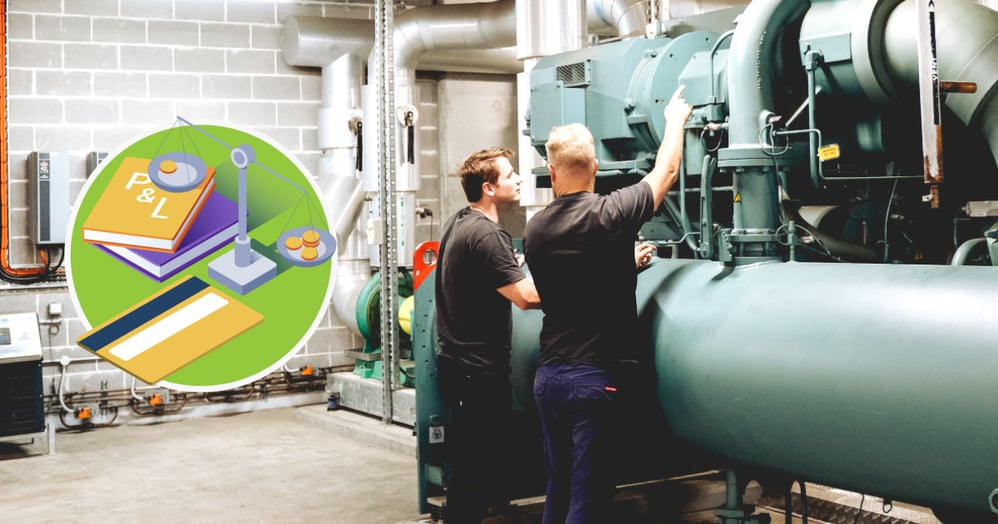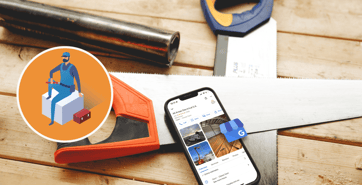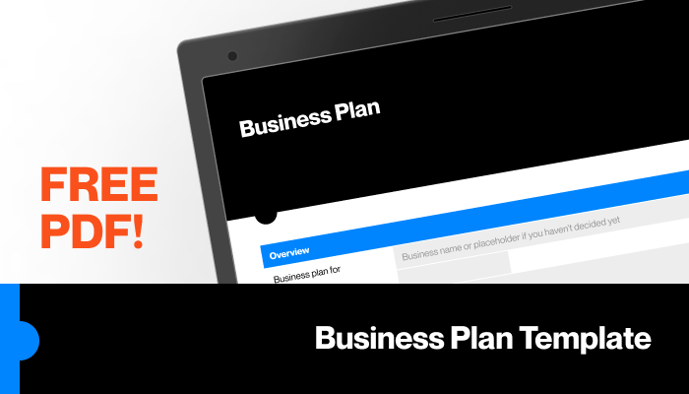HVAC Business Start-up Costs – Your Guide to HVAC Expenses
by Team Tradify, February 7, 2023

Table of Contents
If you’re thinking about starting your own HVAC business, understanding the costs to get up and running should be a priority. HVAC business start-up costs vary from a few thousand $/€/£ to tens of thousands — depending on the equipment and tools you need to purchase upfront. However, lots of fixed costs like essential tools and insurance are simply unavoidable.
So, before you build your business plan, contemplate the perfect business name or jump straight into hiring staff, make sure you’ve got these six essential expenses accounted for when starting your HVAC business.
If you want to keep up with costs, it's essential to get your pricing right. Use our free Charge Out Rate Calculator to pinpoint your pricing!
Short on time? Skip ahead!
- 1. Tools of the trade
- 2. Components and starting inventory
- 3. Insurance
- 4. Vehicle
- 5. Marketing and advertising
- 6. Making it official
- 7. Start as you mean to go on
1. Tools of the trade
From specialised hand tools to bespoke accounting and job management software, starting your HVAC business with the right devices will make a big difference to the quality of work you deliver and how easily you manage your business as it grows.
Digital tools
Boosting cash flow should be a focus when launching any business, and getting invoices out and paid on time is a crucial part of that. Often, paperwork slips by the wayside while you focus on quoting jobs and getting stuck in, and hiring a dedicated accountant is rarely affordable when you’re starting out.
To make the financial side of your HVAC business as easy as possible, it is worth using accounting software like Xero or Quickbooks to do the hard yards for you. Combine this with top-notch job management software like Tradify, and you’ll be part of a thousands-large community of trades business owners keeping on top of every aspect of the job, and getting more time back in their days as a result.
Combining job management software with accounting software means all your notes, quotes, emails and important documents are stored in one place. You can track every job from quote to invoice, create slick quotes on the spot for customers, and even chase up overdue payments automatically. Best of all, Tradify integrates with popular accounting software platforms Xero, Sage, MYOB and Quickbooks.
Ballpark annual subscription costs for job management software + accounting software at the time of writing:
- 🇬🇧 UK - £500-600
- 🇺🇸 USA - $700-800
- 🇦🇺 AU - $ 600-700
- 🇳🇿 NZ - $600-700
Physical tools
The exact equipment you’ll need depends on whether you’re starting a full-service HVAC operation (covering installation, repairs, and maintenance) or a more specialised service. While there are various options available to soften the blow of upfront tool costs like hire purchase or leasing (or a bit of both), to get your HVAC business up and running at a basic level, here’s what you’ll need:
- Everyday HVAC tools like hammers, screwdrivers, wrenches, pliers, drills, gauges, metal and tubing cutters, extension cords and staple guns.
- Safety equipment, including personal protective equipment (PPE) like work boots, ear muffs, hard hats and inner and outer work gloves.
2. Components and starting inventory
While it can be tempting to minimise your start-up costs by choosing cheaper HVAC components, it could damage your reputation and the likelihood of repeat business in the long run. A typical air conditioning unit can last ten years or more, so establishing a reputation for quality can mean that ongoing, regular business comes your way.
It’s best to research which brands are well-reviewed in your industry, compare prices of different suppliers, and ask about pricing for loyalty programs or bulk purchases. Don’t forget that the components and materials you choose will be considered when pricing HVAC jobs.
The amount of start-up inventory you have is up to you, you can either buy things as you need them (which could delay a job getting done) or keep some commonly used inventory on hand.
3. Insurance
After forking out all that money on tools, you’ll want to protect them, and you’ll also want to protect yourself if something doesn’t quite go to plan. In some cases, insurance can be a legal requirement or contractual obligation. Here are the main HVAC business insurance costs to consider:
- Public liability insurance - this will cover any claims against you for injury or property damage that occurs as a direct result of your work.
- Tools and equipment cover - you can take a few practical steps to keep your tools safe, but unfortunately, theft can still happen. Make sure your tools are insured.
- Income protection - this will protect you if you have an accident and can’t work for an extended period.
- Employer’s liability insurance - if you hire employees or even take an apprentice under your wing, you need specific insurance to cover them.
- Vehicle insurance - don’t forget to have your work vehicle insured under your business.
Total insurance costs vary hugely, so it’s best to speak with an authorised business insurance broker to discuss the best cover for your specific situation.
Interested in learning more about business insurance for tradespeople? We’ve written an insurance guide!
4. Vehicle
A reliable workhorse that’s spacious enough to transport all the tools and equipment to each job is essential, and it also creates an impression on your customers. Stretching the budget for a new Hummer won’t make much business sense, so choose something tidy, fuel-efficient, and reliable and consider purchasing vehicle decals or wraps with your company branding.
Don’t forget to factor in your ongoing fuel costs too!
Ballpark used vs new vehicle purchase costs are:
- 🇬🇧 UK - £8,000-35,000
- 🇺🇸 USA - $20,000-40,000
- 🇦🇺 AU - $20,000-90,000
- 🇳🇿 NZ - $20,000-57,000
Can’t decide whether to save on a second-hand car or fork out for something fresh? Consider these factors.
5. Marketing and advertising
Marketing is crucial for winning new customers and standing out in an industry where there’s plenty of competition. Fortunately, many marketing activities don’t cost a cent — like creating social media pages and some directories, asking customers for reviews and making the most of word-of-mouth.
The best thing you can do is start with a good marketing plan.
Here are the main marketing costs to consider for an HVAC business:
- Creating a website — while it’s not essential, having a website means customers can easily find you online. The more presence your business has online, the more likely people will be to get in touch. Here’s how to build the best HVAC business website.
- Company branding — whether you create a logo on Canva or enlist the help of a designer through a platform like Fiverr, having your own branding gives your business a professional edge. You can use it on business cards, uniforms, car decals and all your paperwork.
Read our guide: Digital Marketing for Small Businesses and Tradespeople.
It’s best to take advantage of all the free marketing and advertising opportunities when you’re starting off, and then, as a rule of thumb, look to spend 2-5% of your gross revenue annually.
6. Making it official
State and local governments often require HVAC technicians to be qualified and licensed. This varies depending on the region and often based on the type of work involved. As a business owner, you’ll be responsible for adhering to relevant certifications, licensing, and associated costs.
In addition, you’ll need to register your business. The ballpark costs for that are:
- 🇬🇧 UK - £12-40
- 🇺🇸 USA - $100-800
- 🇦🇺 AU - $440-530
- 🇳🇿 NZ - $115
There's more to learn about government and industry regulations in our guide to starting an HVAC business!
7. Start as you mean to go on
Having a firm grasp on the essential HVAC business start-up costs will help you decide whether the timing is right, whether you need to search for financial support, or whether you need more time to build up some capital and gain more experience.
Launching your own HVAC business can be hugely rewarding. And once you’ve covered all the expenses in this guide and have your plan sorted, join thousands of HVAC businesses and other tradespeople who started on the right foot using the Tradify app. It’ll cut hours off your admin and grow with your business every step of the way.
Try Tradify free for 14 days, or pop over to one of our live demo webinars to see our software in action!
Related articles

How To Set Up a Google Business Profile (for Trade Businesses)

Aussie Electrician Reduces Admin Time by 95%

Squeaky Clean Scheduling for Pro Carpet Cleaning
Give Tradify a go for free!
Save 10+ hours/week on business admin with the highest-rated job management software for tradespeople.
With free one-on-one training and phone support, it's never been easier to get started.



